Visiting other Lodges is a wonderful way to learn the deep meaning of our Universal Brotherhood.
This is a report of a visit to a Scottish Lodge from a Portuguese Brother, Carlos Oliveira Santos. Welcome to the Lodge Dumfries Kilwinning no. 53 on the roll of The Grand Lodge of Scotland, the oldest Masonic Lodge in Dumfriesshire.
In the heart of Scotland lies Lodge Dumfries Kilwinning No. 53, a cornerstone of Masonic tradition and the oldest Masonic lodge in Dumfriesshire.
Known for its rich history and deep connections to the nation’s heritage, this lodge stands as a testament to the enduring legacy of Freemasonry not only in Scotland but across the globe.
This article delves into the historical significance, cultural ties, and the universal principles of brotherhood that define the Masonic experience, drawing from the experiences of a visit by a Portuguese Master Mason to the celebrated Lodge.
Nestled in the scenic town of Dumfries, Lodge Dumfries Kilwinning No. 53 boasts a history that traces back to the early 16th century.
With origins disputed between the years 1515 and 1575, its story is interwoven with the fabric of Scottish history.
Granted its charter by The Grand Lodge of Scotland in 1750, the lodge has been a beacon of Masonic tradition for centuries. This charter was a formal acknowledgment of its Masonic activities, signifying its important role within the broader Masonic community.
The lodge’s historical roots are augmented by its association with Robert Burns Junior, the son of Scotland’s national poet, Robert Burns.
This connection not only highlights the familial ties within the Masonic order but also underscores the cultural intersections between Freemasonry and Scottish heritage.
Burns’s association with Freemasonry, particularly in the later stages of his life in Dumfries, reflects the deep-seated Masonic principles in his works and the shared values between his poetic legacy and the Masonic ethos.
This intertwining of Masonic and Scottish identities showcases the lodge’s role in preserving cultural heritage through the lens of Freemasonry.
The Masonic tradition in Scotland is marked by a notable lack of distinction between “operative” and “speculative” Freemasonry, challenging the conventional dichotomy observed in Masonic historiography.
This perspective, supported by modern academic studies, suggests that symbolic interpretations and the speculative dimension of Freemasonry existed within lodges long before the 18th century.
Scottish Freemasonry’s intricate history, characterized by its varied lodge practices and rich ritualistic traditions, exemplifies the complexity and depth of Masonic practice and belief.
Lodge Dumfries Kilwinning No. 53, through its practices and rituals, encapsulates these unique Scottish Masonic traditions, offering insight into the continuity and evolution of Masonic thought and practice over the centuries.
The international dimension of Masonic brotherhood was vividly displayed in the interactions between Lodge Dumfries Kilwinning No. 53 and the visiting Portuguese Master Mason.
The exchange of letters and gestures of goodwill between the Grand Master of the Grand Orient of Portugal and the lodge members underscored the transcendent nature of Masonic bonds, which stretch across national and cultural divides.
This episode highlighted the shared values and universal principles that bind Masons worldwide, fostering a spirit of unity and collaboration that transcends geographic and cultural barriers.
During the visit’s assembly, it occurred also a visitation by the Provincial Grand Lodge further highlighted the structured hierarchy within Scottish Freemasonry, showcasing the layers of oversight and communal support that characterize Masonic governance.
And there was also a demonstrative Fellowcraft Degree, executed with precision and reverence, offered a window into the ritualistic and symbolic dimensions of Masonic practice.
These rituals, foundational to the Masonic experience, serve as conduits for transmitting values and principles across generations, reinforcing the bonds of brotherhood among Masons.
The Masonic banquet, or agape, following the lodge assembly, exemplified the fellowship and communal spirit inherent in the Masonic tradition.
This gathering, marked by informality and camaraderie, emphasized the social aspect of Freemasonry, where bonds of friendship and brotherhood are celebrated and strengthened.
The raffle and exchange of gifts further symbolized the generosity and goodwill that underpin Masonic interactions, reinforcing the principles of mutual support and fraternity.
Lodge Dumfries Kilwinning No. 53, through its storied history and vibrant traditions, embodies the essence of Scottish Freemasonry. Its connections to cultural icons, adherence to centuries-old rituals, and commitment to the principles of brotherhood and mutual support showcase the depth and breadth of the Masonic order.
The experiences shared during the visit, from ritualistic ceremonies to moments of casual fellowship, illuminate the core of Freemasonry’s universal appeal. In a world often divided by differences, the Masonic tradition, as demonstrated by the Scottish and Portuguese Masonic communities, offers a profound example of unity, friendship, and shared humanity.
As Freemasonry continues to thrive in the modern era, lodges like Dumfries Kilwinning No. 53 serve as custodians of a rich heritage and as beacons of the timeless values that define the Masonic brotherhood.
In embracing both tradition and the bonds of universal fraternity, Freemasonry remains a potent force for fostering understanding, camaraderie, and shared purpose among its members, transcending boundaries to unite individuals in common pursuit of moral and spiritual enrichment.
Robert Burns, often referred to as Scotland’s favorite son, is a figure whose work and life have transcended the boundaries of literature to influence cultural and Masonic traditions.
Born on January 25, 1759, in Alloway, Scotland, Burns’s poetry and songs have become integral to Scottish identity and celebrations worldwide, particularly Burns Night, which commemorates his life and work each year.
Beyond his literary contributions, Burns’s association with Freemasonry adds a layer of intrigue and depth to his legacy, reflecting his influence in various spheres of society. This article explores the significant cultural and Masonic connections to Robert Burns, shedding light on his enduring legacy.
Robert Burns’s poetry and songs are deeply rooted in the Scottish landscape, language, and way of life, making him a symbol of national pride.
His works, such as “Auld Lang Syne,” “Scots Wha Hae,” and “Tam o’ Shanter,” capture the essence of Scottish culture, history, and folk traditions.
Burns’s use of the Scots language and his portrayal of everyday life in Scotland have endeared him to generations, contributing significantly to the preservation and celebration of Scottish heritage.
Perhaps the most tangible manifestation of Burns’s cultural impact is Burns Night, held annually on his birthday, January 25th.
This celebration involves recitations of his poetry, traditional Scottish meals such as haggis, neeps, and tatties, and performances of his songs.
Burns Night is not confined to Scotland; it is celebrated globally, reflecting Burns’s universal appeal and the widespread Scottish diaspora.
These celebrations underscore Burns’s role in promoting a sense of community and belonging among Scots and admirers of Scottish culture worldwide.
Burns’s contributions to Scottish music are profound. He collected and adapted traditional Scottish folk songs, ensuring their preservation.
His own compositions, blending lyrical poetry with folk melodies, have become folk standards.
Burns’s ability to capture the universal themes of love, nature, and social justice in his music has led to its adaptation by artists across different genres and eras, underscoring his lasting influence on the musical landscape.
Robert Burns was initiated into Freemasonry at St. David’s Lodge No. 174 in Tarbolton, Ayrshire, in 1781. His Masonic journey is well-documented, reflecting his active participation and eventual ascension to the rank of Depute Master of the Lodge.
Freemasonry’s ideals of brotherhood, equality, and charitable endeavors resonated with Burns’s personal beliefs and are evident in his poetry and songs.
His Masonic experiences provided a framework for his views on fraternity and social equality, themes that permeate his work.
Burns’s Masonic connections are not just a matter of historical record; they also influence his literary output. His poem “A Mason’s Apron” and other works contain references to Masonic symbols and principles.
These references serve as a testament to the depth of Burns’s engagement with Freemasonry and its philosophical underpinnings. His writings reflect the Masonic emphasis on moral improvement, the value of labor, and the universal brotherhood of man, which align with the Enlightenment ideals of his time.
Burns’s stature within the Masonic community remains significant. Many Masonic lodges around the world hold Burns suppers to honor his memory and contributions, similar to the broader cultural celebrations of Burns Night.
These events often feature readings of his poetry and discussions on his Masonic life, highlighting the enduring respect and affection for Burns within the fraternity.
His legacy in Freemasonry serves as a bridge between his literary contributions and his impact on social and philosophical thought.
Robert Burns’s legacy is a testament to the profound impact a poet can have on both cultural identity and fraternal organizations like Freemasonry.
His work not only celebrates Scottish culture and language but also embodies the ideals of brotherhood, charity, and social equality that are central to Masonic philosophy.
Burns Night and Masonic commemorations of his life and work ensure that his influence remains vibrant, fostering a sense of community and shared heritage.
As both a national icon and a brother Mason, Robert Burns continues to inspire admiration and emulation, proving that his words and ideals are as relevant today as they were in his own time.
Through his poetry, songs, and Masonic connections, Burns has left an indelible mark on the world, embodying the spirit of Scotland and the universal values of humanity.
May this visit report could serve even if modestly to reinforce our common aspiration.
Article by: Carlos Oliveira Santos

Carlos Oliveira Santos, is a Portuguese university professor and the author of thirty books. His last book is about the Brazilian architect Oscar Niemeyer (www.niemeyerbook.com ).
Carlos is a Master Mason initiated into the Lodge Universalis (Grand Orient of Portugal) in 2012.
With a Ph.D. in Political Science, his main specialism is social marketing, and he received the Outstanding Achievement Award, conferred by the European Social Marketing Association, during the 2019 World Social Marketing Conference in Edinburgh. He is the publisher of Marketing Social Portugal – A social marketing space for the Portuguese-speaking world (www.marketingsocialportugal.net ).
He studied Burns at the Centre for Robert Burns Studies at The University of Glasgow.
Carlos is the president of The Cascais Burns Club, the first created in Portugal.
Recent Articles: in people series
 Celebrate the extraordinary legacy of The Marquis de La Fayette with C.F. William Maurer's insightful exploration of Lafayette's 1824-25 tour of America. Discover how this revered leader and Freemason was honored by a young nation eager to showcase its growth and pay tribute to a hero of the American Revolution. |
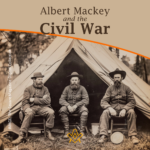 Albert Mackey and the Civil War In the midst of the Civil War's darkness, Dr. Albert G. Mackey, a devoted Freemason, shone a light of brotherhood and peace. Despite the nation's divide, Mackey tirelessly advocated for unity and compassion, embodying Freemasonry's highest ideals—fraternal love and mutual aid. His actions remind us that even in dire times, humanity's best qualities can prevail. |
 Discover the enduring bond of brotherhood at Lodge Dumfries Kilwinning No. 53, Scotland's oldest Masonic lodge with rich historical roots and cultural ties to poet Robert Burns. Experience rituals steeped in tradition, fostering unity and shared values, proving Freemasonry's timeless relevance in bridging cultural and global divides. Embrace the spirit of universal fraternity. |
 Discover the profound connections between John Ruskin's architectural philosophies and Freemasonry's symbolic principles. Delve into a world where craftsmanship, morality, and beauty intertwine, revealing timeless values that transcend individual ideas. Explore how these parallels enrich our understanding of cultural history, urging us to appreciate the deep impacts of architectural symbolism on society’s moral fabric. |
 Discover the incredible tale of the Taxil Hoax: a stunning testament to human gullibility. Unmasked by its mastermind, Leo Taxil, this elaborate scheme shook the world by fusing Freemasonry with diabolical plots, all crafted from lies. Dive into a story of deception that highlights our capacity for belief and the astonishing extents of our credulity. A reminder – question everything. |
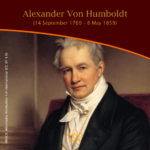 Dive into the extraordinary legacy of Alexander Von Humboldt, an intrepid explorer who defied boundaries to quench his insatiable thirst for knowledge. Embarking on a perilous five-year journey, Humboldt unveiled the Earth’s secrets, laying the foundation for modern conservationism. Discover his timeless impact on science and the spirit of exploration. |
 Voltaire - Freethinker and Freemason Discover the intriguing connection between the Enlightenment genius, Voltaire, and his association with Freemasonry in his final days. Unveil how his initiation into this secretive organization aligned with his lifelong pursuit of knowledge, civil liberties, and societal progress. Explore a captivating facet of Voltaire's remarkable legacy. |
 Robert Burns; But not as we know him A controversial subject but one that needs addressing. Robert Burns has not only been tarred with the presentism brush of being associated with slavery, but more scaldingly accused of being a rapist - a 'Weinstein sex pest' of his age. |
 Richard Parsons, 1st Earl of Rosse Discover the captivating story of Richard Parsons, 1st Earl of Rosse, the First Grand Master of Grand Lodge of Ireland, as we explore his rise to nobility, scandalous affiliations, and lasting legacy in 18th-century Irish history. Uncover the hidden secrets of this influential figure and delve into his intriguing associations and personal life. |
 James Gibbs St. Mary-Le-Strand Church Ricky Pound examines the mysterious carvings etched into the wall at St Mary-Le-Strand Church in the heart of London - are they just stonemasons' marks or a Freemason’s legacy? |
 Freemasonry and the Royal Family In the annals of British history, Freemasonry occupies a distinctive place. This centuries-old society, cloaked in symbolism and known for its masonic rituals, has intertwined with the British Royal Family in fascinating ways. The relationship between Freemasonry and the Royal Family is as complex as it is enduring, a melding of tradition, power, and mystery that continues to captivate the public imagination. |
 A Man Of High Ideals: Kenneth Wilson MA A biography of Kenneth Wilson, his life at Wellington College, and freemasonry in New Zealand by W. Bro Geoff Davies PGD and Rhys Davies |
 In 1786, intending to emigrate to Jamaica, Robert Burns wrote one of his finest poetical pieces – a poignant Farewell to Freemasonry that he wrote for his Brethren of St. James's Lodge, Tarbolton. |
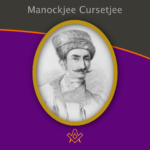 Alex Lishanin explores Mumbai and discovers the story of Lodge Rising Star of Western India and Manockjee Cursetjee – the first Indian to enter the Masonic Brotherhood of India. |
 Aleister Crowley - a very irregular Freemason Aleister Crowley, although made a Freemason in France, held a desire to be recognised as a 'regular' Freemason within the jurisdiction of UGLE – a goal that was never achieved. |
 Sir Joseph Banks – The botanical Freemason Banks was also the first Freemason to set foot in Australia, who was at the time, on a combined Royal Navy & Royal Society scientific expedition to the South Pacific Ocean on HMS Endeavour led by Captain James Cook. |
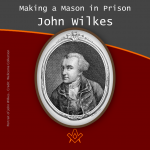 Making a Mason in Prison: the John Wilkes’ exception? |
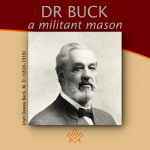 "To be a good man and true" is the first great lesson a man should learn, and over 40 years of being just that in example, Dr Buck won the right to lay down the precept. |
 Elias Ashmole: Masonic Hero or Scheming Chancer? The debate is on! Two eminent Masonic scholars go head to head: Yasha Beresiner proposes that Elias Ashmole was 'a Masonic hero', whereas Robert Lomas posits that Ashmole was a 'scheming chancer'. |
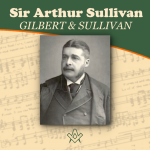 Sir Arthur Sullivan - A Masonic Composer We are all familiar with the comic operas of Gilbert and Sullivan, but did you know Sullivan was a Freemason, lets find out more…. |
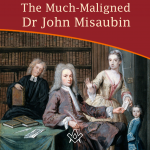 The Much-Maligned Dr John Misaubin The reputation of the Huguenot Freemason, has been buffeted by waves of criticism for the best part of three hundred years. |
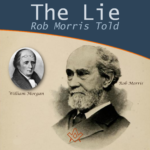 Was William Morgan really murdered by Masons in 1826? And what was the lie Masonic author Rob Morris told? Find out more in the intriguing story of 'The Morgan Affair'. |
 Lived Respected - Died Regretted Lived Respected - Died Regretted: a tribute to HRH The Prince Philip, Duke of Edinburgh |
 Who was Moses Jacob Ezekiel, a Freemason, American Civil War Soldier, renowned sculptor ? |
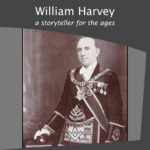 A Masonic author and Provincial Grand Master of Forfarshire in Scotland |
 Who was Philip, Duke of Wharton and was he Freemasonry’s Loose Cannon Ball ? |
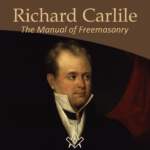 Richard Carlile - The Manual of Freemasonry Will the real author behind The Manual of Freemasonry please stand up! |
 Nicholas Hawksmoor – the ‘Devil’s Architect’ Nicholas Hawksmoor was one of the 18th century’s most prolific architects |
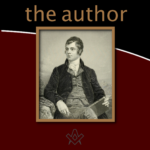 By Bro. Anthony Oneal Haye (1838-1877), Past Poet Laureate, Lodge Canongate Kilwinning No. 2, Edinburgh. |
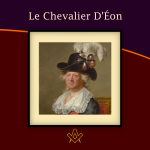 The Curious Case of the Chevalier d’Éon A cross-dressing author, diplomat, soldier and spy, the Le Chevalier D'Éon, a man who passed as a woman, became a legend in his own lifetime. |
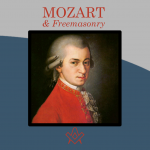 Mozart Freemasonry and The Magic Flute. Rev'd Dr Peter Mullen provides a historical view on the interesting topics |
masonic knowledge
to be a better citizen of the world
share the square with two brothers

click image to open email app on mobile device





